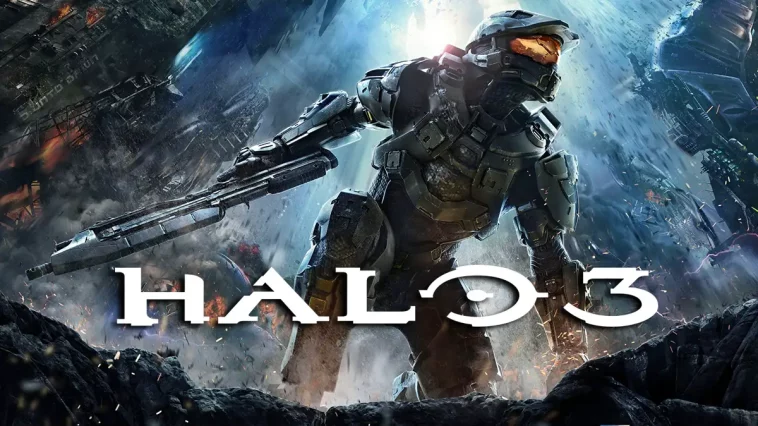Halo 3 is a 2007 first-person shooter video game developed by Bungie for the Xbox 360 console. The third installment in the Halo franchise, the game concludes the story arc begun in 2001’s Halo: Combat Evolved and continued in 2004’s Halo 2.
In the annals of gaming history, few franchises have made as significant an impact as Halo. Developed by Bungie and published by Microsoft Game Studios, the Halo series has long been a hallmark of the first-person shooter (FPS) genre.
At the heart of this illustrious franchise lies “Halo 3,” a game that not only concluded the original trilogy but also solidified Halo’s position as a titan in the world of gaming. In this article, we embark on a journey through the world of “Halo 3,” delving into its storyline, gameplay innovations, and the lasting legacy it has left on the gaming landscape.
A Galactic Odyssey: The Plot and Setting

“Halo 3” continues the epic saga of Master Chief, the Spartan super-soldier, and his AI companion, Cortana, as they confront the ancient and enigmatic alien alliance known as the Covenant. The game picks up where “Halo 2” left off, plunging players into a desperate struggle to prevent the Covenant from unleashing a universe-threatening menace: the activation of the eponymous Halo rings.
The game’s narrative is a masterclass in science fiction storytelling, weaving together intricate characters, unexpected alliances, and heart-pounding action sequences. As Master Chief, players journey across alien landscapes, from the desert plains of Africa to the heart of Covenant citadels and mysterious Forerunner installations. The game’s rich lore and world-building immerse players in a universe on the brink of catastrophe.
Gameplay Mechanics: Innovations in the FPS Genre

“Halo 3” introduced a range of gameplay innovations that revolutionized the FPS genre. The addition of equipment, deployable items like bubble shields and gravity lifts, gave players a new layer of strategy, enabling both defensive and offensive tactics. The game’s sandbox approach encouraged experimentation, empowering players to approach encounters in various ways.
The cooperative mode allowed up to four players to experience the campaign together, fostering camaraderie and teamwork. The multiplayer component, a hallmark of the series, expanded with the introduction of Forge mode, enabling players to customize maps and create their own game modes. This feature was a precursor to the player-generated content revolution seen in modern gaming.
Unforgettable Multiplayer: A Cultural Phenomenon
The Halo series has long been celebrated for its multiplayer component, and “Halo 3” took it to new heights. The game introduced the theater mode, allowing players to capture and share their gameplay moments, contributing to the rise of gaming content creation.
Customization was a significant aspect of “Halo 3’s” multiplayer, with players able to personalize their Spartan or Elite characters and even their weapons. The introduction of the ranking system and skill-based matchmaking ensured that players were matched with opponents of similar skill, creating a competitive yet balanced experience.
Enduring Legacy and Impact
“Halo 3” is not just a game; it’s a cultural phenomenon that continues to influence the gaming landscape. The title’s impact is evident in the growth of eSports, the popularity of gaming content creation, and the lasting dedication of its fan base. It serves as a testament to the power of storytelling and gameplay in the world of video games.
In conclusion, “Halo 3” stands as an embodiment of the heights that the gaming medium can reach. Its immersive storytelling, innovative gameplay, and lasting multiplayer legacy have made it a classic that resonates with both veteran gamers and new generations. The Master Chief’s journey remains a legendary one, exemplifying the power of video games to transport players to far-off galaxies and leave an indelible mark on their gaming memories.



Comments